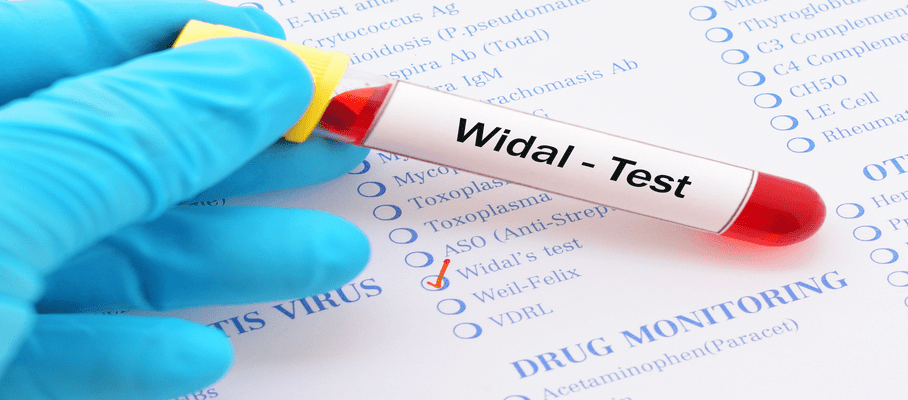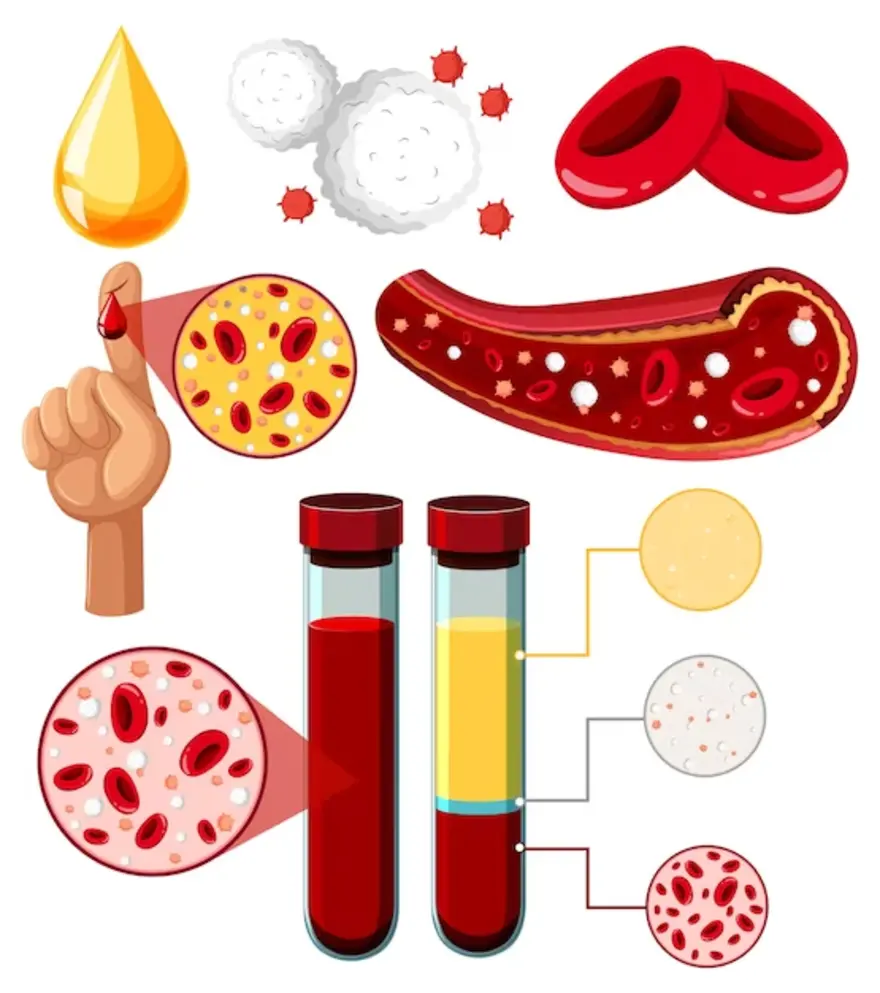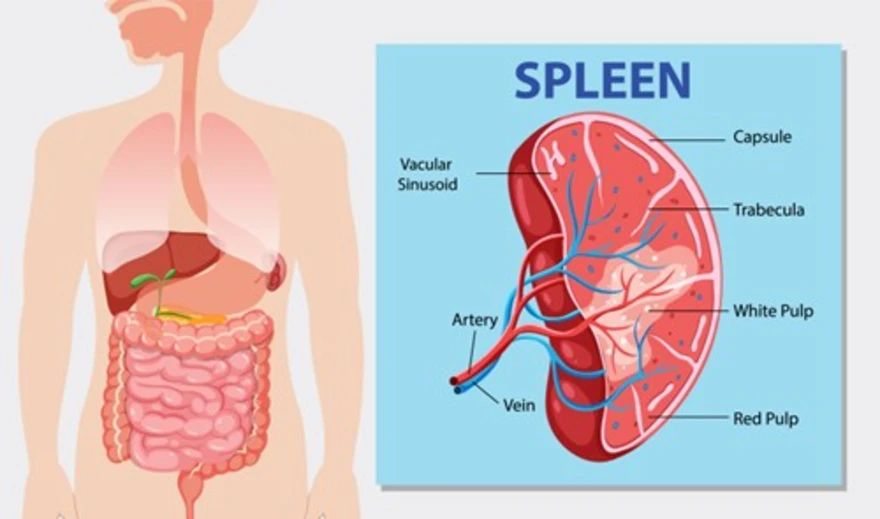Preventive Healthcare
Muscle Spasm: Causes, Prevention & Best Treatments

Table of Contents
Have you ever experienced a sudden, painful tightening of your muscles? This involuntary contraction is called a muscle spasm or muscle cramps. While usually harmless, muscle spasms can cause significant discomfort and interfere with daily activities. Understanding what triggers these cramps and how to manage them can help you find relief and prevent future episodes.
What are muscle spasms (muscle cramps)?
Muscle spasm is an abrupt, forceful contraction of one or more muscles. These cramps often strike without warning, causing the affected muscle to feel hard and tight. Muscle spasms can occur in any muscle but are most common in the legs, especially the calves (leg cramps), feet, thighs, hands, and arms. Some people also experience muscle spasms in the lower back and neck. The intense contraction usually lasts a few seconds to several minutes and may recur multiple times before subsiding.
Who gets muscle spasms?
Muscle cramps can affect people of all ages, but they are more prevalent in older adults and athletes. According to a study, around 60% of adults experience nocturnal leg cramps. Individuals who engage in strenuous physical activities, have certain medical conditions, or take specific medications are also more prone to developing muscle spasms. However, even without any apparent risk factors, anyone can get muscle spasms in the neck or any other part of the body occasionally.
Are muscle spasms (muscle cramps) serious?
In most cases, muscle spasms are not a cause for serious concern. They are painful and can momentarily limit movement, but they typically resolve on their own without causing lasting damage. However, frequent or severe muscle cramps may indicate an underlying health issue that requires medical attention, such as:
- Dehydration
- Electrolyte imbalances
- Nerve disorders
- Inadequate blood flow
- Mineral deficiencies
If you experience muscle spasms regularly, accompanied by other symptoms, or they interfere significantly with your daily life, it's best to consult a healthcare provider for an accurate diagnosis and appropriate muscle cramps treatment.
Causes of Muscle Spasms
Several factors can contribute to the development of muscle spasms, including leg spasm causes:
- Overuse and muscle fatigue: Engaging in intense exercise, especially in hot weather, can lead to muscle cramps.
- Dehydration: When you lose too much fluid through sweating or don't drink enough water, your muscles can become prone to spasms.
- Electrolyte imbalances: Imbalances in minerals like potassium, magnesium, and calcium, which help regulate muscle contractions, can trigger muscle cramps.
- Poor posture and prolonged sitting: Maintaining an awkward position for extended periods can put undue stress on your muscles, causing them to spasm.
- Nerve compression: Conditions like spinal stenosis or herniated discs can compress nerves, leading to muscle cramps.
Symptoms of Muscle Spasms
Muscle spasms can be sudden and painful, often catching individuals off guard. The term spasm meaning an involuntary muscle contraction, typically describes a sharp and intense sensation. These episodes are usually brief but can leave lingering effects.
Common symptoms include:
- Sudden, sharp pain in the affected muscle that may feel like a stabbing or cramping sensation.
- Visible twitching or hardening of the muscle under the skin, which may be noticeable to the touch or sight.
- Tenderness and soreness in the area after the spasm passes, sometimes lasting for hours.
- Temporary difficulty moving the muscle due to pain, tightness, or stiffness following the muscle cramps.
These symptoms can affect any muscle but are most frequently experienced in the legs, arms, or back. Prompt stretching and hydration may help relieve the discomfort.
Risk Factors for Muscle Spasms
Several factors can increase the risk of developing muscle spasms, which are sudden, involuntary contractions of one or more muscles. While muscle cramps can affect anyone, certain individuals are more prone to experiencing them due to age, lifestyle, or underlying health conditions.
Common risk factors include:
- Age: Older adults are more susceptible to muscle cramps, often due to natural muscle loss, reduced activity levels, or decreased hydration.
- Dehydration: Failing to stay properly hydrated—especially during intense physical activity or hot weather—can lead to electrolyte imbalances, triggering cramps.
- Pregnancy: Pregnant women, particularly in the third trimester, frequently experience leg cramps, likely due to weight gain, changes in circulation, and pressure on nerves.
- Medical conditions: Chronic conditions such as nerve disorders, diabetes, thyroid imbalances, or liver disease can increase the likelihood of muscle spasms. These conditions may affect how nerves communicate with muscles.
- Medications: Certain prescription drugs, including diuretics, statins, and medications for high blood pressure, may list muscle cramps as a side effect due to changes in fluid or electrolyte balance.
Being aware of these risk factors can help with the prevention and early management of muscle spasms.
How Are Muscle Spasms Diagnosed?
Diagnosing muscle spasms typically begins with a detailed clinical evaluation. Your doctor will start by reviewing your medical history and asking you to describe your symptoms—especially the sudden, involuntary tightening of muscles that may cause pain or restrict movement. A physical examination follows, where the doctor checks for visible muscle contractions, tenderness, and stiffness in the affected area. You may be asked to perform specific stretches or movements to assess whether these relieve the spasm or trigger discomfort.
For muscle cramps that are frequent, severe, or unexplained, further diagnostic tests may be recommended to determine the underlying cause:
- Electromyography (EMG): This test measures electrical activity in your muscles and helps differentiate common muscle cramps from more complex neuromuscular disorders.
- Imaging tests such as MRI or CT scans: These are useful for detecting structural abnormalities, nerve compression, or lesions in muscles and surrounding tissues.
- Blood tests: These are used to evaluate for electrolyte imbalances (such as low potassium, calcium, or magnesium), thyroid issues, or signs of muscle damage.
- Muscle biopsy: In rare cases, a small sample of muscle tissue may be examined microscopically to rule out diseases like muscular dystrophy or inflammatory myopathies.
Additionally, to determine nocturnal leg cramp causes, diagnosis may involve criteria focused on frequency, pain severity, and specific muscle groups affected. This comprehensive approach helps identify both the cause and the best treatment strategy.
Prevention
Preventing muscle cramps involves addressing the common triggers and taking steps to maintain healthy muscle function. Dehydration is a major cause of muscle spasms. Make sure to drink enough water and fluids throughout the day, especially when exercising or in hot weather. Eat a diet rich in essential minerals like potassium, magnesium, and calcium that support proper muscle contraction and relaxation. Replenish electrolytes after intense workouts. Stretching your muscles before and after physical activity can significantly reduce the risk of muscle spasms, particularly if you lead an active lifestyle or have a job that involves repetitive muscle movements. Focus on stretching the muscle groups prone to spasms. And give your muscles adequate rest between workouts. Refrain from holding prolonged static positions or pushing your muscles to the point of exhaustion, as this can trigger spasms. Finally, certain underlying health issues like diabetes, nerve disorders, or vascular diseases can increase the likelihood of muscle spasms. Work with your doctor to keep these conditions well-controlled.
Best Treatments
The treatment approach for muscle spasms varies based on the severity of the spasm and its underlying cause. For immediate relief, here's what you can do:
- Gently stretch the affected muscle and massage the area to help the contracted muscle fibres relax.
- Apply a heat pack to the tense muscles to improve blood flow and loosen tightness. Alternatively, you can use a cold compress to reduce inflammation and pain.
- If dehydration is suspected, drink plenty of fluids and consider replenishing electrolytes with drinks or supplements.
- Over-the-counter pain medications like ibuprofen or acetaminophen can help alleviate discomfort and inflammation associated with muscle cramps.
For chronic or severe cases of muscle spasms, your doctor may prescribe:
- Muscle relaxants to reduce muscle hyperactivity
- Specific medications that target neurotransmitters involved in muscle contraction
- Physical therapy exercises to improve flexibility and muscle conditioning
- Botox injections to temporarily paralyse overactive muscles, especially for spasms related to dystonia or neuromuscular conditions
When to See a Doctor
Occasional muscle spasms are usually harmless, but you should see a doctor if they are severe, frequent, or worsening over time. Seek medical advice if spasms don’t improve with stretching or hydration, cause lingering pain, muscle weakness, numbness, or swelling, or interfere with sleep and daily activities. Also consult a doctor if you have underlying health conditions, take certain medications, or notice sudden spasms with fever or dark-coloured urine.
Conclusion
By understanding the preventive strategies and treatment options available, you can take proactive steps to keep your muscles healthy and minimise the occurrence of muscle spasms. If you find yourself experiencing frequent, severe, or persistent muscle spasms, don't hesitate to consult your healthcare provider for personalised guidance and care.
At Metropolis Healthcare, we understand the importance of accurate diagnosis in managing conditions like recurrent muscle spasms. Our team of expert phlebotomists provide convenient at-home blood sample collection for testing key parameters like electrolyte levels. With our state-of-the-art diagnostic labs and user-friendly online reporting system, you can access reliable results to inform your muscle health plan.
FAQs
What does a muscle spasm feel like?
A muscle spasm is experienced as a sudden and involuntary tightening of the muscle that can be painful and last for a few seconds to several minutes. You may feel a hard lump in the affected muscle during the spasm, and it can limit your range of motion temporarily.
What deficiency causes muscle cramps?
Deficiencies in certain electrolytes, primarily potassium, magnesium, and calcium, are well-known causes of muscle cramps.
What causes severe muscle cramps all over the body?
Widespread muscle spasms across the body can result from systemic factors like severe dehydration, major electrolyte imbalances, neurological disorders, adverse effects of certain medications, or underlying metabolic conditions. Some neuromuscular diseases can also cause extensive muscle spasms.
What's the difference between a muscle spasm and a muscle cramp?
While often used interchangeably, muscle spasms generally refer to any involuntary muscle contraction, whether painful or not, while muscle cramps specifically denote sudden, painful contractions or tightening of the muscle.
Can dehydration cause muscle spasms?
Yes, absolutely. Dehydration is one of the most common causes of muscle cramps and spasms.
Does magnesium help prevent muscle spasms?
Magnesium is a vital mineral for proper muscle function, and its deficiency is linked to muscle spasms. Ensuring an adequate intake of magnesium through diet or supplements can help prevent muscle cramps.
When should I see my healthcare provider?
It's advisable to consult your healthcare provider if you experience frequent, severe, or worsening muscle spasms that do not respond to home care measures.


























